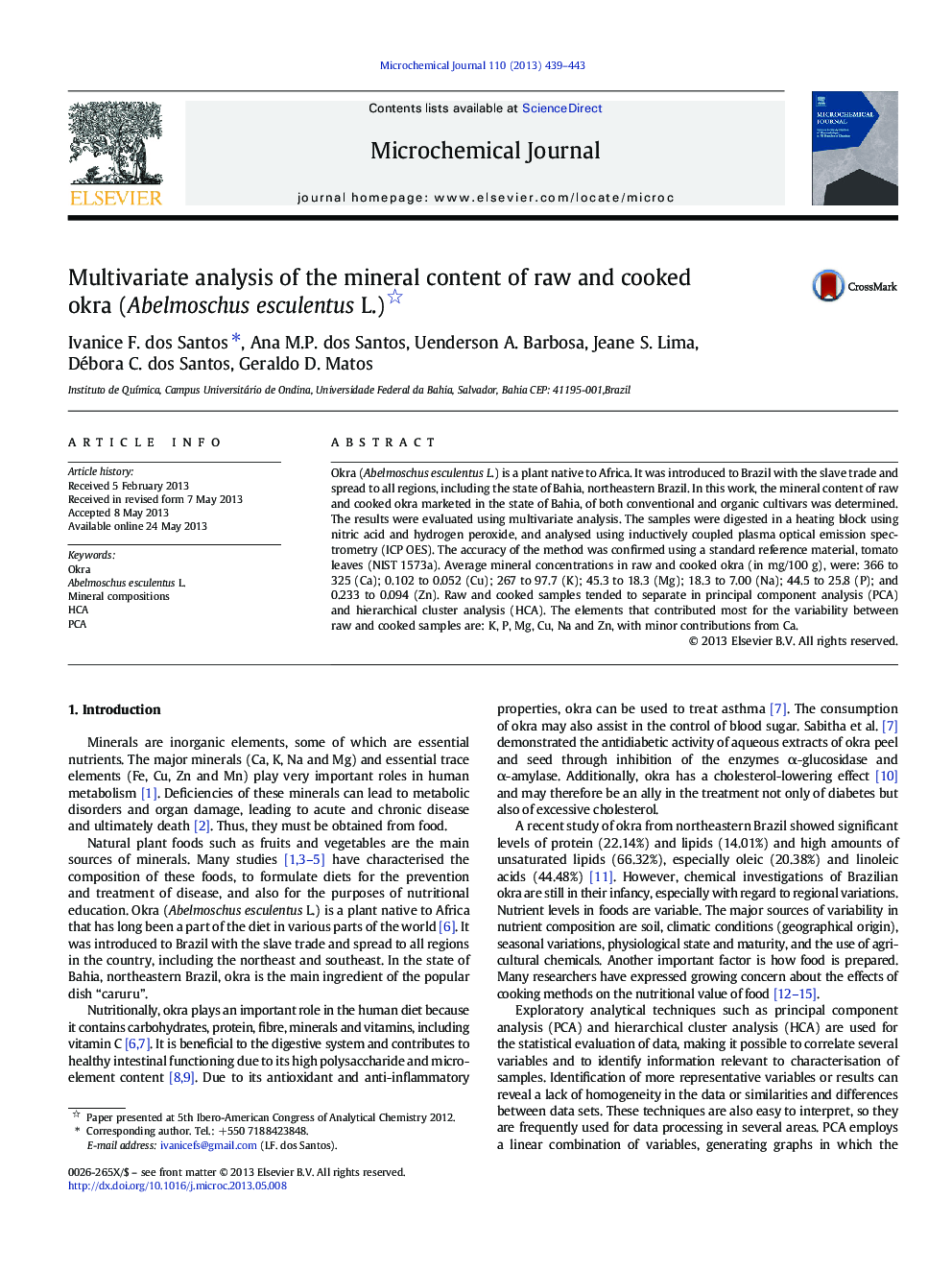| Article ID | Journal | Published Year | Pages | File Type |
|---|---|---|---|---|
| 7643917 | Microchemical Journal | 2013 | 5 Pages |
Abstract
Okra (Abelmoschus esculentus L.) is a plant native to Africa. It was introduced to Brazil with the slave trade and spread to all regions, including the state of Bahia, northeastern Brazil. In this work, the mineral content of raw and cooked okra marketed in the state of Bahia, of both conventional and organic cultivars was determined. The results were evaluated using multivariate analysis. The samples were digested in a heating block using nitric acid and hydrogen peroxide, and analysed using inductively coupled plasma optical emission spectrometry (ICP OES). The accuracy of the method was confirmed using a standard reference material, tomato leaves (NIST 1573a). Average mineral concentrations in raw and cooked okra (in mg/100Â g), were: 366 to 325 (Ca); 0.102 to 0.052 (Cu); 267 to 97.7 (K); 45.3 to 18.3 (Mg); 18.3 to 7.00 (Na); 44.5 to 25.8 (P); and 0.233 to 0.094 (Zn). Raw and cooked samples tended to separate in principal component analysis (PCA) and hierarchical cluster analysis (HCA). The elements that contributed most for the variability between raw and cooked samples are: K, P, Mg, Cu, Na and Zn, with minor contributions from Ca.
Keywords
Related Topics
Physical Sciences and Engineering
Chemistry
Analytical Chemistry
Authors
Ivanice F. dos Santos, Ana M.P. dos Santos, Uenderson A. Barbosa, Jeane S. Lima, Débora C. dos Santos, Geraldo D. Matos,
